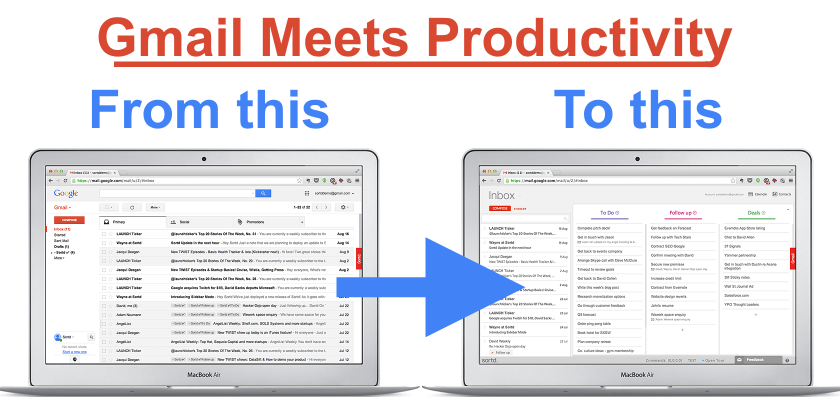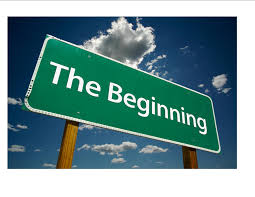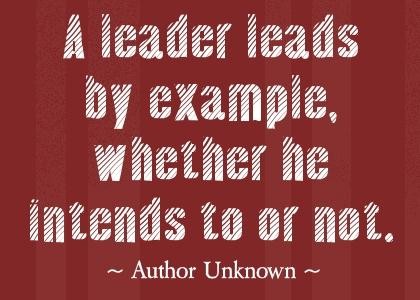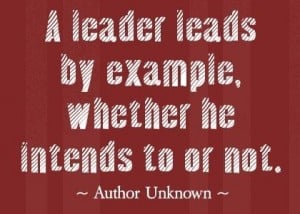Author Archive

(Thanks George, for this month’s post & prompt!)
There has been a lot of talk on the idea that education as a whole takes a long time to change. As an educator, this is a challenging notion, since we are seeing many people doing some amazing things that did not exist when I was a student. Change is happening but sometimes it is hard to see when you are in the middle of the process.
Some things are out of the hands of schools. Budgets and government decisions can make creating new and better learning environments for students tough, but not impossible. Educators are not powerless, and in some cases, more powerful that ever. The story of education can not only be told from the perspective of educators, but also from the students that are currently in the system. Although there is still a lot of work to do (as there always will be in organizations that focus on continuous learning and have an emphasis on becoming “innovative”), there are also opportunities in education, now more than ever, that we will need to take advantage of and create a different path.
Here are some of the challenges we have had in the past and how we can tackle them
1. Isolation is the enemy of innovation.
Education has traditionally been an isolating profession where we get some time together, but not nearly enough. Even if we wanted to change this significantly, in most cases, the current physical structures do not allow us to work with other educators. Some administrators have been very innovative in their planning of teacher prep time and have embedded collaboration time into the regular school day, but it is not necessarily enough to make a significant impact.
How so many educators have shifted this “norm” is by using social media spaces to connect and learn from educators all over the world, and making a significant difference in their own classrooms, and creating much more engaging and empowering learning spaces. Isolation is now a choice educators make. Where the shift really has to happen is using things like Twitter is for educators to connect and share learning that is happening with educators in their own school. I challenged people to do the following (as shared in this visual from Meredith Johnson);

We need to make this happen and create transparency in our own classrooms.
How does a song like “Gangnam Style” go so viral that most people around the world not only know the words but the dance moves? Social media. If a song can spread so quickly, so can great learning.
Make it go viral.
2. A continuous focus on what is wrong, as opposed to what is right.
Think about the traditional practice of what school has done with many of our students. If they struggle with the subject of math, we often send the more math homework to do at home. Does this really make sense? If they are struggling at school, making them struggle at home with the same content is often counter-intuitive. It is not that we shouldn’t struggle, but it is important that we are very thoughtful of how we spend our energy.
The shift that has happened with not only our students, but also our schools, is focusing upon building upon strengths as opposed to focusing solely on weaknesses. This is imperative as building upon strengths often helps us to not only build competence, but also confidence which leads us to the mindset that we are more open to tackle our other challenges along the way.
I love this quote from Forbes on putting people in the right positions to be successful:
Leadership is a privilege, not a right, and we need to treat it as such. Leadership means encouraging people to live up to their fullest potential and find the path they love. That, and only that, will create a strong culture and sustainable levels of innovation.
Many organizations outside of education are hiring not on need, but finding the best people and empowering them based upon their strengths. Schools should try to do their best to follow suit and put people to be in the best situations to not only do well, but to lead.
3. Experience is a very powerful teacher.
I remember sitting and listening to Bruce Dixon at a conference and something he said has always stuck out to me:
In no other profession in the world do you sit and watch someone else do your job for 16 years before you go and do it yourself.
Wow. That is a powerful message and shows why so many new teachers aren’t coming into school with all of these “innovative ideas” and changing our school system like so many people predicted. Many educators simply replicate their experience as a student. If you think about it, at least one-third of many teachers educational experience is as a student, not a teacher. That is a tough thing to overcome, but not impossible.
Innovation has no age barrier, and if we can tweak the experience for educators in their professional learning, they are more likely to change the experience for their students. Writing ideas about “21st century classrooms” on gigantic pieces of paper with a felt marker is not going to create cultural shifts; changing experiences will.
People are starting to look differently at professional learning, and create experiences that are much different from what I first experienced as a teacher. I think a major reason for this shift (going back to point 1) is that educators are seeing the shift in practices in so many other organizations, and are trying to create a different practice where more educators are not really focused on teaching as much as they are about learning. This empathy is crucial since to become a master teacher, you must become a master learner.
Changing experiences to shift the focus on the learner from the teacher helps to disrupt routine. If you would want to create an environment where students would want to be a part of your classroom, we have to experience what learning could look like for ourselves and start from a point of empathy.
One shift that was not mentioned was the mindset of looking at obstacles as opportunities. As mentioned earlier, not everything is in our control, but as educators know, they can make an impact every single day. It is not always easy, and teaching can be a very daunting and tiring job, but I believe that every day we can make a difference if we choose. Having that mindset is the only way that we will ever truly be able to make a powerful change for ourselves and our students.
For this month’s prompt, write about how you already are, or are going to, address the challenges discussed above.
Amber

Teacher empowerment. Student voice. These are real things. Are they happening in your building? As a leader, so you see the need for these two facets of your culture?
It is the responsibility of the leader to provide opportunities and experiences for your teachers to grow as leaders. This is more than just asking once at the beginning of the year, it’s an on going piece of what helps define the culture of a campus. It helps move your school from point A to point B, all fueled by the power of passionately involved staff members.
Have you ever been asked to contribute to a district initiative? When that initiative rolls, out, and you present it your staff, there is a completely different feel to how you “sell” it. You are more invested. You want to see it be successful because you played a part in its creation. The same would hold true for the teachers that you involve in your campus decisions.
Collaborative practices amongst your staff allow for a collective growth, which will also have a direct impact on your students. They have the chance to learn from each other, see different perspectives, and have the chance to share their successes. This builds team morale, as well as allow best practices to be shared and discussed. Highlights from these “share sessions” could become the template for your next staff development!
There was a teacher that I worked with that had a….negative….reputation on our staff. She always asked a million questions, pointed out all of the flaws in any of our plans, and was generally thought of to be a pain. It soon became apparent that I loved having her in meetings!! She brought up every possible way things could go wrong, which allowed me to put a plan in place where it wouldn’t happen. She was detail oriented, where I was more of a big picture girl. Once she realized how truly important I thought her opinion was, she made a concentrated effort to not present her thoughts so antagonistically, which in turn changed the way our staff thought of her.
What are ways that you are INTENTIONAL in allowing your staff to feel empowered? Share your best thoughts here, and we will all benefit from collective empowerment!
Sharingly,
Amber

How Do You Manage Your Time As Principal?
Many things in life change and evolve, but the total time in a day continues to be 24 hours. Part of being the best parent, teacher, administrator we can be is maximizing that time while eating and getting enough rest to live a healthy and rewarding lifestyle. How we use our time as school leaders has a direct impact on what we are able to achieve as students, staff and an organization as a whole. Balance is not easy and some days and weeks it looks different from others. When you’re a principal, one incident that occurs just after the morning announcements can consume a good part of the day when you had so many things on the day’s docket.
As leaders, we know this is going to happen. We know one of the beauties of “the job” is that it is unpredictable, and you never know what is going to happen when you walk into the school each morning. The awesome responsibility we have is to proactively plan for circumstances around professional development, school safety, arrival/dismissal, special education services, staff culture and morale, student/staff/parent relatiobships, custodial, secretarial and the overall day to day management of a busy school building. Now matter what level of school you work at, the day goes by fast and skipping lunches and bathroom breaks becomes the norm when you’re “in the weeds” from time to time.
Don’t choose to go at it alone
At school, much like at home, I’ve found it beneficial to including the support around me in my plans, goals and deadlines. This takes an extra helping of transparency in the day to day work, but in the end when you communicate regularly to your “work family,” you have your secretary, custodian, teacher leaders and others necessary seeing through a similar perspective. At home, my wife and I have a shared Google Calendar on our phones, and home events are booked just like those at work.
This month’s #SAVMP is to take a closer look at your own proactive time management as a school leader and as a person. One resource that I’ve used over the years to help me prioritize the most important parts of my day (where I want to invest my time the most) is The Big Rocks Principal Management. I read this Kim Marshall piece in Principal Magazine back in March of 2008, and it stuck with me. I actually brought a vase and rocks in to live on my desk as as a constant visual reminder of where my mind needs to be focused.
CLICK IMAGE TO VIEW PDF including 10 Big Rocks for Principals

Tools, like a good workout program can put you in a position to be successful, but you have to do the work. There are quite a few tools available that might support efforts to focus your time on what is important. Obviously “there’s an app for that” here in 2015, but again maximizing your time is about mindset and discipline. We can’t expect any tools or app to do the heavy lifting for us. Check out a few “pomodoro apps” (can be downloaded in the
Video on the Pomodoro Technique via Ignite Phoenix by Greg Head
Two recommended tools to get you thinking…

Focus app – Pomodoro
1) I’ve been using the FOCUS pomodoro app since grad school, and use it more at home than at school to get writing, reading and special projects completed.
2) Take control of your Google email with http://sortd.com. On Twitter follow @GetSortd.

Image credit: computerrelatedsolutions.com
How do you manage your time? What have you found as helpful? What has been a roadblock for you? Any tools out there that you’d recommend to a colleague to keep The Big Rocks in focus each day?
Dr. @Joe_Mazza serves as the Leadership Innovation Manager at @PennGSE’s Mid-Career Doctoral Program in Educational Leadership @MCDPEL. You can follow the work of the MCDPEL Innovations Lab here.
Is Growth Mindset a Sliding Spectrum?
I want to swim in the deep, murky waters of nuance when it comes to growth mindset. Maybe I need some lessons.
Royan Lee
This is how Royan Lee finishes off his article on Growth Mindset. It is a good place to finish a post on how we develop our own growth mindset. This is something I am thinking about this year. Our board has made this an important initiative this year for all of us and I know many school boards conducted studies and research on this last year.
I think as teachers, we get into this profession because we believe in having a growth mindset. I think it is a great focus for our school board. I really like how Lee used the ‘How to Learn Math’ series by Jo Boaler in his post. He is following the series and I am going to encourage our teachers to do the same thing.
This will be a good series for me too – I actually said in a staff meeting ‘I never could teach math’ …good start!
For us, the challenge of growth mindset will be transferring this to our students and parents. I know I have lots to learn about all of this, but my first thought is that we need to make sure our students believe in themselves. They need to know that they can make a fundamental change in their living circumstances.
One of my goals this year will be to have a growth mindset for myself, the staff, students and our parent community. Where can we growth, where can we move to.
People with a growth mind-set don’t put people in categories and expect them to stay there, but people with a fixed mind-set do. They not only believe in fixed traits, but they also believe that they can quickly and accurately judge those traits. This means that once they have decided that someone is or is not capable, they are not very open to new information to the contrary. And they may not mentor people who they have decided are not capable.
When teachers decide that certain students are not capable (or when principals decide that certain teachers are not capable), they may not take steps to help them develop their potential. In a recent study, people who had a fixed or growth mind-set and were asked to respond to a seventh-grade student who had received a poor grade on the first mathematics test of the year. Those who had a fixed mind-set comforted the student and told the student that not everyone could be good in mathematics.
In sharp contrast, those who had a growth mind-set said that they knew that the student could do better, encouraged the student to try harder, and gave the student specific suggestions for study and learning strategies. For the educator with a fixed mind-set, learning is the students’ responsibility. If students don’t have what it takes, so be it. But for the educator in a growth mind-set, learning is a collaboration in which the teacher has great responsibility.
It is essential for educators to communicate that they hold a growth mind-set. Recently, we studied college sports teams. At the beginning of the year, we asked athletes to tell us how much they thought their coaches believed success came from natural talent and how much they thought their coaches believed success came from practice and hard work. The more that athletes thought their coaches believed in hard work over natural talent, the better the athletes did that year. Students know what educators value—they pick up their messages and act on them.
We will try all sorts of projects to see if we can encourage a growth mindset – right now we are trying to redevelop our entire schoolyard. It is a bit of a crazy idea, but it is capturing the imagination of our kids and teachers. If you push hard enough, what can you achieve?
Leadership is a learning journey – I totally agree with Lee – I will need lots of lessons! Discuss this month how you as a leader can help promote and grow the “mindset” on your campus.
Paul
In our last discussion we focused on the idea of “Fostering Effective Relationships”. This started with discussing how you create connections in building community, which is essential to the work that we do every day in schools. This is about showing “character”, and an important focus in building relationships.
This post, we would like to focus on the idea of your credibility as an administrator. In any profession, if people feel you do not understand their work, your credibility lacks, often leading to a lack in leadership. As discussed in George’s original post on “5 Questions You Should Ask Your Principal”, instructional leadership is important to our role in schools today.
With your mentor, we would love you to discuss the following question:
What are some areas of teaching and learning that you can lead in your school?
After you have some discussion, it would be great for you to make this thinking visible to others through your blog, but it is also important that you reflect to have an idea of your own strengths, since often, we do not recognize our own abilities.
Remember, you have the entire month of November to discuss this idea and don’t HAVE to be a part of SAVMP to participate.
We are looking forward to seeing what you share moving forward!
Lead-ingly,
Amber

A couple of reminders for this initial month…
- Make regular contact with your mentor/mentee’s…vox, tweet, email…whatever you’d like! Develop relationships that will allow for transparency of strengths and weaknesses.
- Write & reflect towards the monthly prompt. Prompts will be posted the first week of the month. You have the entire month to respond.
- Connect on twitter, sharing the posts, using the #SAVMP hashtag.
Not an “official” member? Write & connect anyway! We welcome as many voices in the conversation as we can get!
Guiding-ly,
Amber

SAVMP Installment 1
We would like to welcome you to the second year of the SAVMP (School Admin Virtual Mentor Program). This year, we have decided to keep the pairings and the overall group smaller so that we can try to create a better program for participants. I am also excited to lead this project with Joe Mazza, Paul McGuire, and George Couros, to help with the dissemination of not only work, but more importantly, expertise and perspective.
To start off the program, we are going to focus on a blog post that George has written previously on “5 Questions You Should Ask Your Principal”, over the next 5 installments of this blog, we are going to give you and your mentor time to discuss each question and use it as the basis of your program.
The first question we are going to focus on is in based on the idea of creating strong relationships to build a solid foundation in your school. From our collective experience, we have seen many administrators focus on the idea of being “innovative” before focusing on the spending time with staff, students, and understanding classrooms. As George would say, “Innovation is a human endeavor”, and it is important that we focus on these connections first.
So here is the first question, whether you are a principal, vice-principal, or on any part of a leadership team:
“What are some ways you connect with your school community?”
Please feel free to write comments on the blog, discuss this with your mentor/mentee, and then share a post on your own blog, whether it is through writing, video, or some other medium.
If you are not an “official” member, but would like to contribute, please leave your link in the comments below.
Thanks for your dedication to this program! We are looking forward to learning from one another!
Beginningly,
Amber

Hi stranger friends!
I was Voxing with George this morning, 🙂 and we were lamenting how life just exploded for us both this spring. He was busy getting engaged and we all know how time consuming wedding planning can be, 🙂 Add that to an influx of speaking engagements, he’s been in high demand! Not just speaking locally either…the man has been ALL over. Meanwhile, I’ve been busy getting a new job in a neighboring district and had an award thrown in, just for good measure.
Excuses? Possibly. The reality of our admin worlds? Definitely.
There isn’t a calm “season” in education, especially when you are trying to live to the fullest outside of your building. Recognizing the ebbs and flows of what we do is important to recognize as you contemplate leadership. We talk about modeling what we want to see from our staff, and this balance counts too! Administrators have to set boundaries and limits. The purpose of leading is to show through your walk and talk, that you are genuine. Being busy, and letting things slide at times, (gulp.) is a reality. It’s if and how you handle that slide that speaks loudest to your staff.

That being said, it’s the end of the school year. It’s time for EOY procedures, it’s time for making plans for the next year, it’s time for goodbyes. Thank you for joining us on this SAVMP adventure. I’m going to let George close us out proper, but I wanted to remind you to value the connections you have made through this program. Reach out to me, or George, or your mentee’s/mentor’s, if you ever have a need.
Good luck and happy summer!
Amber
When thinking about ways to bring about change or attempting to cultivate something new for your campus, where do you begin? Do you start with a formal staff meeting? Where you stand in front of the group and tell them what you want to see happen?
How effective has the been?
Conversation at dinner last night talk centered around those rockstar teachers on your campus. The ones who are willing to go above and beyond because its what should be done for kids, not because they are getting paid to be there. When I think about some of the crazy ideas that I wanted to see happening in classrooms, I think about the teachers I went to talk with to make that happen. When I wanted to see a bulletin board focused on the digital tools happening in the classroom, I knew exactly where to go to make that happen. This teacher knew my expectations, knew my vision, and what my end goal was with the something as simple as a bulletin board. (Vision! It all come back to vision!) I also had to balance what was asked of this particular rockstar in order to not detract from her teaching, or her relationships amongst the staff. Todd Nesloney wrote an inspiring post about how he embraced that role on his campus.
Who are your teacher leaders? How are you lifting them up and empowering them to be an example without ostracizing them from the rest of your staff? Share your strategies with your mentees this week so they can start keeping an eye out for ways to embrace and lift up those around them.
Have a great week!
Amber

Recently I took part in a leadership activity that aptly illustrated the importance of “clear” communication. The group was partnered up. One partner had a picture of a figure, the other a blank piece of paper. While sitting back to back, the person with the figure attempted to explain what the picture looked like while the other partner drew. It is an understatement to say that at the end of the activity, the pictures didn’t typically match.
As a leader it is up to you to clearly define not only your vision, but your expectations. If they are not so clearly stated that anyone can read, follow or understand, the onus falls on you, as the leader to clarify. If your expectation is that parents feel welcome when they walk in the doors, what are the look for’s that indicate that is happening? Have you shared those with your staff? What if your passion is that every student feels heard? What does that actually LOOK like in a classroom? Are your teachers aware? the counselor? Many leaders in the corporate world now understand that clear, two-way communication is vital to the success of any organization and its leaders. Jim Collins, in his best selling book about making organizations better, Good to Great, writes, “A primary task in taking a company [read: school or school system] from good to great is to create a culture wherein people have a tremendous opportunity to be heard and, ultimately, for the truth to be heard.” (2001, p. 88)
Students learn better when adults communicate well. The need for good communication in our schools is great because the needs of our students are great. Students matter.
The spring is the downhill slide in education. We’re moving towards the end of the 2013-2014 year, and plans for 2014-2015 are on the horizon. Take advantage of what’s left of this semester to evaluate just how clear is your “communication”. Is there something that you can share with your group that didn’t go as expected, because of a communication miscue? or a success?
Have a GREAT week!
Amber










